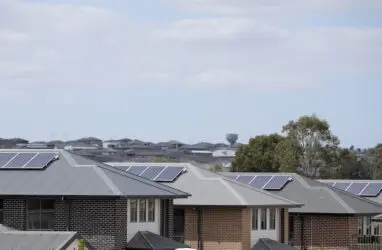A few weeks back, amid the turmoil of the Trump Administration’s “Liberation Day” tariffs, the futures market was pricing five more rate cuts this year. Earlier this week, the US and China agreed to massively reduce tariffs for 90 days while they negotiate a longer-term deal. US tariffs will be lowered to 30% (from 145%)
The post Markets cool on RBA rate cuts appeared first on MacroBusiness.
In 2022 I wrote a blog post where I explained the phenomenon of the AEC needing to do more distribution of preferences before declaring election results, and thus needing longer to complete this process. We now have updated information for 2025, and can see that this process has become even more complex this year. When you look at how this has changed over two decades, it is a remarkable transformation.
When the deeply conflicted Saul Kavonic is the go-to guy for media energy analysis, no country could survive. His analysis here includes: ALP broke the gas market by intervening in 2022. LNP lost the election owing to gas reservation policies. We need a pro-business and pro-market approach to energy. Not all of this is horseshit.
A bit of a wallflower, though, and not much joy for steel. The latest CISA output has faded to bang on year-ago levels. The growth upgrades have begun. Goldman. We had assumed that the US-China trade talks in Geneva would reduce tariff rates on Chinese products from >100% to 50-60%. The joint announcement released on
The post Iron ore joins the party appeared first on MacroBusiness.
The Australian Bureau of Statistics (ABS) has released the Q1 wage price index, which rose by 0.9% over the quarter to be 3.4% higher year-on-year: The result was stronger than expected, with analysts tipping a 0.8% rise over the quarter and 3.2% year-on-year. The rise in wage growth was driven by the public sector, where
The post Australian wage growth hits RBA target appeared first on MacroBusiness.
Australia’s manufacturing industry is in terminal decline, falling to only around 5% of the economy in 2024, down from around 14% in the late 1970s. Australia has the lowest manufacturing share in the OECD. One of the recent causes of Australian manufacturing decline has been soaring energy costs on the East Coast of Australia. East
Labor is set to have more than 90 seats in the lower house when the new parliament sits for the first time. However, Crispin Hull has questioned the notion that Labor won this month’s federal election in a “landslide”: In fact, fairly modest swings were hugely magnified and amplified by the electoral system to result
The post Labor’s election “landslide” overblown appeared first on MacroBusiness.
The Market Ear on the recession that never was. Best recession ever Once again, the recession never came. Economists and markets spent much of the past year bracing for a downturn—citing rate hikes, inverted yield curves, and slowing indicators—only to watch the economy remain stubbornly resilient. It’s a familiar pattern. As the old adage goes, “macroeconomists
The post The chase begins appeared first on MacroBusiness.





